Parents Are The Best Advocates – By CAREbuddy Debanjana Bhaumik

This article was contributed by CAREbuddy Debanjana Bhaumik.
Featured photo: Debanjana, her husband, Som, and their 7-year-old girl, Sahana.
Both Som and I were working in Oil & Gas sector in Singapore when we relocated to Houston, Texas, USA in 2013. Sahana was born there in 2015. Sahana was diagnosed with autism in 2018 at Texas Children’s Autism Center. Our family moved back to Singapore in 2020.
The early years as special needs caregivers
We had noticed that Sahana was not talking at the age of 2 years old. We brought up our concerns to her pediatrician in Houston. He advised us to wait and watch for 6 months (as kids in bilingual families may delay in picking up speech). Eventually he sent us for evaluation. We had already started speech therapy (ST) and occupational therapy (OT) while waiting for evaluation (12 months wait time).
Finally, after the evaluation in 2018, Sahana was diagnosed with autism. She was prescribed full time ABA (Applied Behavior Analysis) therapy. We were shocked and saddened by the diagnosis.
In order to double confirm the diagnosis, we also got her evaluated at NUH Child Development Unit (CDU) in 2018 but unfortunately the results were the same. Our pediatrician at NUH CDU suggested to us to stay back in Houston and get the ABA therapy done. Once completed, we could plan to come back to Singapore and enroll Sahana in Pathlight school.
Hence started Sahana’s journey with ABA therapy in 2019. It was not an easy one, especially considering the cost, resources, time, work/life balance factors for both Som and me. I am very grateful to my parents for their continual support during these difficult times as they made multiple trips all the way to Houston in order to help out with Sahana. It was a huge learning curve for us. Within 3 months we saw awesome improvements in Sahana. On completion of her ABA therapy, we planned our move back to Singapore in 2020. Again, it was not an easy decision for us. Both of us quit our jobs and moved back to Singapore at the start of the pandemic.
Joining a parent support group
Just as we returned back to Singapore in 2020, the Covid-19 wave hit leading to lockdown. There were delays in getting a preschool and EIPIC services for Sahana. At this time, I was looking for parent support groups for special needs (SN) children. I came to know about CaringSG from Edward Chan in the CASPER support group. I also came to know about various parent to parent support groups on Facebook, WhatsApp etc. These groups provided a wealth of information that we needed at that time.

Photo: Debanjana, Som, and Sahana celebrating Sahana’s 7th birthday.
Once Sahana got admission to Pathlight school, I thought it would be good to share our experience with other parents going through the same journey. When I came to know about CaringSG’s CAREbuddy program, I thought it would be an ideal avenue to give back to community.
After joining and completing the CAREbuddy training, I came to know about a lot of local resources which will be helpful to parents of SN kids while waiting for intervention and or school services. It was a very in-depth training covering a wide range of topics to help you listen with empathy and to empower your caregivers to make the best decision for their family.
Working as a CAREbuddy intern has been pretty exciting. I am so glad to be able to share Sahana’s journey with other parents. Hope they find something useful from it. At the same time, I have learnt a lot from my caregivers.
I would definitely urge the caregivers of SN kids to join this CAREbuddy program if they can spare the time. Making new connections and putting yourself out there can be a little daunting in the beginning, but with time, it will be fulfilling journey.
Encouraging fellow special needs caregivers
I am a strong advocate of early intervention. I have seen it in case of my own child how early ABA therapy became the turning point in her intervention journey.
I understand that getting the evaluation report/ diagnosis of special needs can be very heartbreaking for the parents. The societal stigma associated with special needs also makes it quite scary. I will encourage the parents to look beyond this and concentrate on finding intervention for your kids.
Don’t be shy to ask for help from family, friends, professionals, doctors, teachers etc. Do your own research and be willing to learn. Waiting for kids to grow up and think that they will learn by themselves could be too late. Don’t miss the opportunity of early intervention.
Finally, these words taught to us during Sahana’s ABA therapy have always stayed with me, “Parents are the best advocates for their own kids.”
About CAREbuddy
CAREbuddy is one of CaringSG’s Project 3i programmes where trained special needs caregivers (CAREbuddies) provide emotional support to fellow special needs caregivers.
Trainees go through a total of 24 hours of training, followed by 6 months of internship upon graduation. During internship, CAREbuddy interns begin to support fellow caregivers, and our trainers will mentor them as well.
Please join our FB page to receive more updates on how to sign up, and read more about CAREbuddy at https://caring.sg/carebuddy/
Other Updates
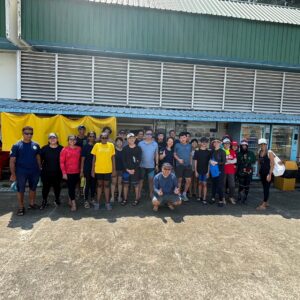
A Day On The Dragon Boat, 13 July 2024
On 13 July 2024, CaringSG and volunteers from the Kallang Water Sports Centre organised a fun-filled afternoon on the Dragon Boat for 14 caregivers and 9 care recipients.
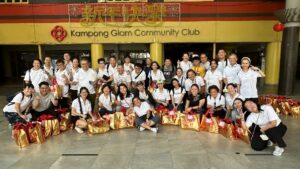
Kampong Glam CNY Festive cheers Distribution
It was indeed a great joy and privilege to work with the grassroots and community to share the bliss and joy with these caregivers during this festive season by distributing goodie bags to them.
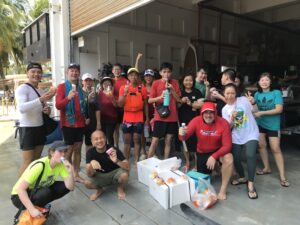
Paddle & Clean with Singapore Paddle Club on 8 October 2023
Instead of the usual land activities, CaringSG partnered with 10 volunteers from the Singapore Paddle Club (SPC) on 8 October 2023 to bring caregivers and their care recipients out to sea!
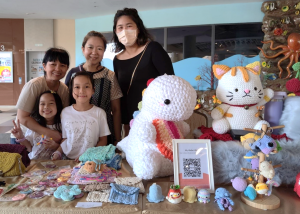
CAREcottage Feature – Crochet With Love: A Crochet Interest Group
Crochet With Love is a crochet group for caregivers to crochet on a regular basis for respite care and charity.
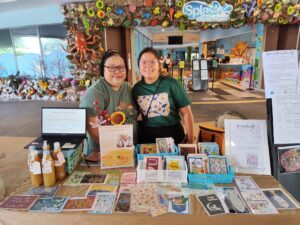
CAREcottage Feature – YoungStarSG: Handcrafted Cards and Orange Enzyme Cleaners
YoungStarSG is a ground up initiative that helps youths/adults with autism to work from home, as a form of purposeful engagement and to earn an income.
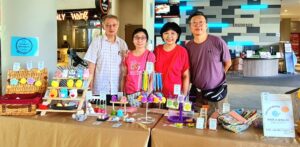
CAREcottage Feature – Crochet_Connectz: Handmade Crochet Gifts
Hi, I’m Ling, a full-time caregiver and owner of Crochet_Connectz, an inclusive microbusiness that sells crochet, amigurumi and handcrafted gifts.








